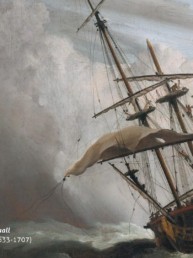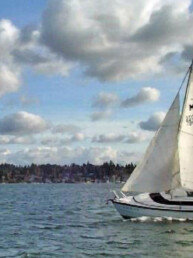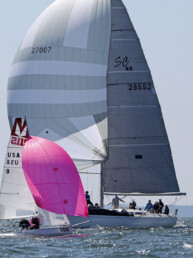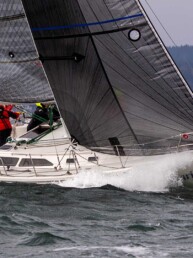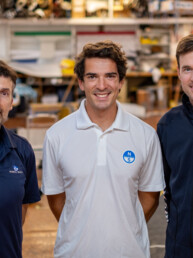The Salish 200 started as a seat-of-your-pants, “officially unofficial” adventure race. Creators Jason Andrews and Shawn Dougherty are thrilled to welcome Corinthian Yacht Club of Seattle (CYC Seattle) as the event’s new host club beginning with the 2024 edition, enabling the race to flourish and evolve in the years to come.
Editor’s note: It was recently announced that the Salish 200 race will now work with CYC Seattle as its Organizing Authority. The 2024 Salish 200 takes place June 21 – 23, 2024, with boats starting at 7 p.m. on Friday in Port Townsend and going north around San Juan County and south around Vashon Island (in the order of their choosing) as they make their figure eight for the 200-mile race. The fleet will finish in Port Townsend by a 7 p.m. time limit on Sunday. Registration for this year’s Salish 200 went live on May 1, and is open to monohull and multihull boats with an ORC or PHRF rating.
Shawn Dougherty and I, co-owners of the J/125 Hamachi, are all about sailing adventures. After doing Transpac in 2019, we were planning to do the Race to Alaska (R2AK) in 2020. As we all adjusted to a world affected by Covid-19, we lamented the cancellation of so many races and, while delivering Hamachi up to Port Townsend, several of the Transpac crew started joking that maybe we should make up our own race to have an occasion to get on the water. We always thought the Salish Sea needed a 200-mile race—a multi-day event similar to the Chicago-Mac Race—and we also hoped it might eventually count as a Transpac and Pac Cup qualifier (the nearest of those was Pacific NW Offshore out of Oregon). Mainly, our goal was to focus on the sailing adventure more than the sailing race, and create an event that was about celebrating sailing in the Pacific Northwest.
Digging into my charting software, I discovered that the distance from Marrowstone Lighthouse down around Vashon Island was 102 nautical miles, which also happened to be the same distance as Marrowstone Lighthouse up and around the San Juan Islands and back. If you start in the middle, captains and tacticians could decide which way they wanted to go: north, south, clockwise or counterclockwise. The race was like a pick-up game of sailboat racing—we fashioned it like a weekend-long Cannonball Run of sailing. Wanting to make maximum use of time, we set the start at 7 p.m. on a Friday and a cutoff time on Sunday evening to end the misery in case it was a total drifter.
To help more boats participate, we later devised two shorter courses as a part of the race. Given that the event starts and ends in the middle of the course, it was easy to create two 100 mile events—the Puget Sound 100 and San Juan 100.
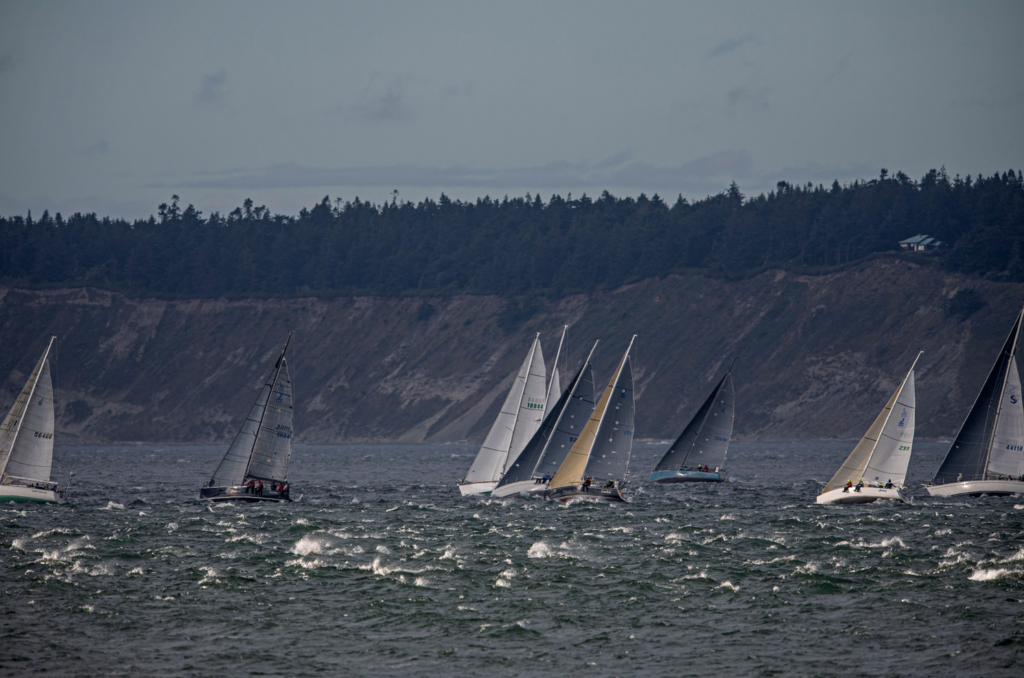
After several great years of this seat-of-the-pants approach, it became clear that we needed a proper hosting entity to sanction the event for it to grow and evolve. This new club home for Salish 200—CYC Seattle—has just been made official. A recent press release from the club noted that “CYC is excited to bring the Salish 200 race to their calendar, where it will use its expertise and resources to host the race as an official event and hopefully as a new namesake in the Pacific Northwest racing scene.”
CYC Seattle’s Race Fleet Captain, Jonathan Anderson, said of bringing the event into CYC’s management: “The Salish 200 offered a unique opportunity for CYC to have a signature distance race. And it should provide sailors in our area a chance to qualify for longer ocean races.” Jonathan, who has participated in the event once before on a J/105, went on to share his view that the Salish 200 truly is an adventure race. “It’s 50 hours of racing, and you could see everything from 40 knots to hours floating in the straits in that time. The tides and currents become huge factors. It gives you every different flavor of sailing in the Pacific Northwest.” The official Notice of Race and Registration is all being handled by CYC.
As the race founders, Shawn and I certainly agree. The Salish 200 course uniquely showcases the beauty and geography of the Pacific Northwest, with great views of Mount Rainier rounding Vashon Island as well as Mount Baker rounding the San Juan Islands. It also provides many interesting challenges to test boats and their crews. It is a double overnight sail so crews will need to get into their watch rotations soon after starting. While the nights around the solstice are short, sailing at night through shipping lanes is serious business and takes a focused and experienced crew. The currents are incredibly challenging—ideally you want to get flushed up and down Puget Sound so planning your route to maximize current and wind is critical. You need to complete each 100 mile course in around 24 hours. It’s always interesting to see which boats are passing Port Townsend Saturday evening.
Shawn and I, as well as the leadership at CYC, have noted that the Salish 200 event dates immediately precede Anacortes Race Week, and we’re all enthusiastic about the ways some sailors might see participating in the Salish 200 or one of the shorter courses as a super-fun way to complete a delivery before then enjoying a terrific week of racing out of Anacortes.
Three new perpetual CYC trophies will be introduced for this race, each paying homage to the Coast Salish People after which these waters and the event is named.
Feature image of the 2020 Salish 200 start is courtesy of Sean Trew.
For more information, check out salish200.com and cycseattle.org.


